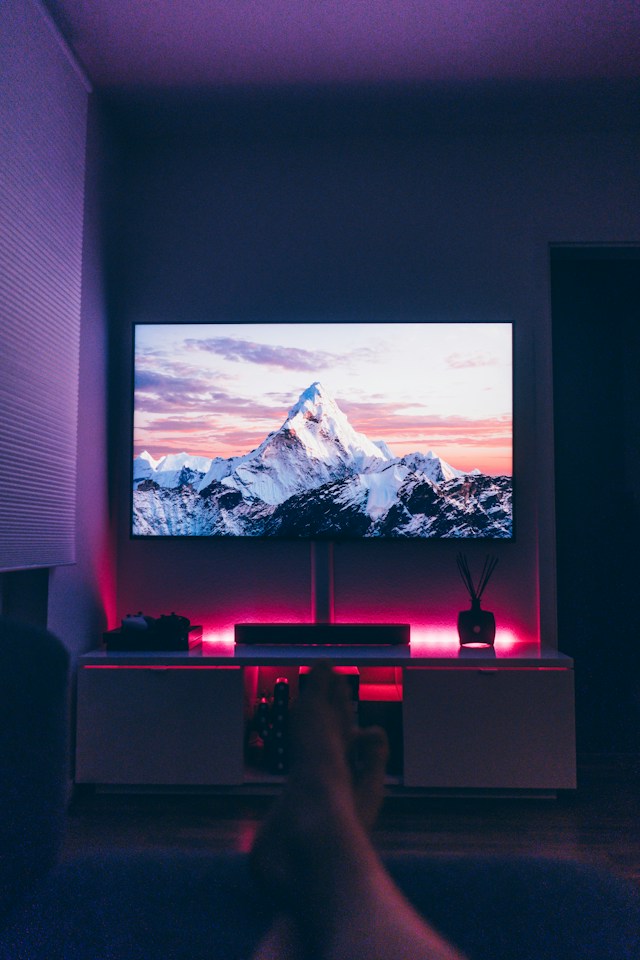As technology continues to evolve, so does the way we watch television. A crucial part of this evolution is the adaptive picture technology, a feature found in the latest TV models. This technology adjusts the TV settings based on ambient light conditions, ensuring an optimal and comfortable viewing experience for you. Now, you may be wondering, how does this adaptive picture technology work? and what makes it so special? Well, let’s delve into it.
Understanding the Basics of Adaptive Picture Technology
Before we delve into the details of adaptive picture technology, it’s crucial to understand the basics. The idea behind this technology is to adjust the TV’s settings, such as brightness and contrast, based on the room’s ambient light conditions. It’s meant to provide an optimal viewing experience, regardless of the lighting situation.
Also read : Can Dual-View TV Technology Allow Two Viewers to Watch Different Programs Simultaneously?
The technology uses sensors built into the TV to measure the amount of light in the room. It then uses this data to adjust the television’s settings – from picture brightness, contrast, and color, to sharpness and even motion smoothness. Hence, it ensures you get to enjoy the best possible picture quality, whether you’re watching in a bright, sunlit room or a dark, cozy space.
How Ambient Light Affects Your Viewing Experience
Ambient light significantly affects your viewing experience. If your room is too bright, the TV screen might seem dull and the colors washed out. Conversely, if the room is too dark, the images could appear too bright or overly contrasted, causing eye strain.
Topic to read : What Role Will Cloud Gaming Services Play in the Evolution of Smart TV Features?
Adaptive picture technology comes into play here by intelligently adjusting the TV’s settings based on the light conditions. For instance, if you’re watching TV in a brightly lit room, the technology will increase the screen’s brightness, enhancing the colors and ensuring a vibrant picture. Similarly, if you’re in a dark room, the technology will reduce the brightness and adjust the contrast, preventing the screen from being too bright and straining your eyes.
The Role of Artificial Intelligence in Adaptive Picture Technology
Artificial Intelligence (AI) plays a significant role in adaptive picture technology. AI algorithms help analyze the data collected by the TV’s light sensor, making real-time adjustments to ensure optimal picture quality.
What’s more, AI goes beyond just adjusting brightness and contrast. It also adjusts color saturation, sharpness, and many other aspects, taking into account the content you’re watching. Whether it’s a fast-paced sports game or a moody film noir, AI ensures that the picture quality is perfectly suited to the content.
Adaptive Picture Technology: A Game Changer in TV Viewing
Adaptive picture technology is indeed a game-changer in TV viewing. It takes away the hassle of manually adjusting television settings, offering a custom viewing experience based on the room’s light conditions and the content on the screen.
By automating the process of adjusting picture settings, this technology allows you to enjoy a more immersive viewing experience. Whether it’s a sunny afternoon or a dimly lit evening, you can be assured of optimal picture quality, tailored to your specific viewing conditions.
The Future of Adaptive Picture Technology
The future of adaptive picture technology seems promising. As AI continues to evolve, we can expect even more accurate and sophisticated adjustments, enhancing our television viewing experience further.
For instance, future TVs might be able to custom-adjust the picture settings based on individual viewer preferences. They could also adjust settings based on the specific genre of the content being watched, whether it’s a horror movie, a drama series, or a sports match. The possibilities are endless, and we can only wait to see how this technology unfolds in the coming years.
As we’ve seen, adaptive picture technology is revolutionizing the way we watch television. By adjusting television settings based on ambient light conditions and the content being watched, this technology ensures that our TV viewing experience is always optimal, immersive, and comfortable. No doubt, it’s a significant stride in the ever-evolving journey of television technology.
So the next time you sit down to watch your favorite show or film, remember that the perfect picture you’re enjoying is all thanks to the marvel of adaptive picture technology. As technology continues to evolve, who knows what other innovations lie ahead in the world of television viewing?
The Complexities of Tone Mapping and Dynamic Range in Adaptive Picture Technology
When it comes to adaptive picture technology, two terms that often come up are tone mapping and dynamic range. But what exactly do these terms mean and how do they contribute to your viewing experience?
Tone mapping is a technique used in image processing to convert one set of colors into another, essentially mapping one color space onto another. In the context of adaptive picture technology, tone mapping is used to adjust the colors on your TV screen based on the ambient light in the room. The goal is to ensure that the colors are as accurate and vivid as possible, regardless of the lighting conditions.
Dynamic range, on the other hand, refers to the range between the darkest and brightest parts of an image. A high dynamic range (HDR) means that the image has a wide range of colors and luminosities, from deep blacks to bright whites. With adaptive picture technology, the dynamic range is adjusted based on ambient light to ensure maximum detail and contrast in both dark and bright areas of the picture.
One crucial aspect of adaptive picture technology that utilizes these features is local dimming. Local dimming involves adjusting the backlight of different parts of the screen independently, ensuring that each part of the screen is lit appropriately based on the content displayed and the ambient light. This results in a more vibrant and detailed picture, with better contrast and a more balanced brightness level.
The Revolutionary Role of Adaptive Brightness and Intelligent Mode in Enhancing Viewing Experience
Adaptive display technologies such as adaptive brightness and intelligent mode are increasingly becoming popular due to the enhanced viewing experience they offer.
Adaptive brightness refers to a feature in TVs that automatically adjusts the screen’s brightness based on the ambient light in the room. The TV uses a light sensor to detect the amount of light in the room and adjusts the screen’s brightness accordingly. Whether you’re watching a movie in a brightly lit room or a dimly lit room, adaptive brightness ensures that the screen is neither too bright nor too dull, offering a comfortable viewing experience.
On the other hand, intelligent mode goes a step further by not only adjusting the screen brightness but also making other adjustments based on ambient conditions and the content you’re watching. For instance, intelligent mode may adjust the contrast, color saturation, and even the sound output based on the viewing environment. Whether you’re watching a high-octane action movie or a serene nature documentary, intelligent mode ensures that the picture and sound settings are optimally adjusted for an immersive viewing experience.
In addition, these technologies also incorporate features like backlight control and auto brightness for efficient brightness control, resulting in an even more personalized and comfortable viewing experience.
Conclusion – The Marvel of Adaptive Picture Technology
In conclusion, adaptive picture technology is set to revolutionize the way we watch television. By intelligently adjusting the television settings such as brightness, contrast, color saturation, and sharpness based on the ambient light conditions and the content we’re watching, this technology ensures our viewing experience is always optimal, immersive, and comfortable.
The integration of AI in this technology has made it possible to gather real-time data about our viewing environment and make adjustments accordingly. From the basics of brightness control to the complexities of tone mapping and dynamic range, every aspect is meticulously taken care of, providing us with unparalleled viewing experience.
As the future unfolds, we can expect even more sophisticated levels of customization and accuracy, taking our television viewing experience to new heights. The next time you sit down to watch your favorite show or movie, remember, the perfect picture you’re enjoying is all thanks to the marvel of adaptive picture technology.
As we embrace this new era of television viewing, one thing is certain: adaptive picture technology is not just a passing trend – it’s the future. As technology continues to evolve, we can only anticipate what exciting innovations lie ahead. After all, in the world of television technology, the possibilities are endless.











